WW1 Photos: Harper's Pictorial Library of The World War, Volume 8 - 1920
Photographs and Other Images Sourced from the Book Harper's Pictorial Library of The World War, Volume VIII: The Inventive and Industrial Triumphs: Science and Industry in the Struggle, 1920. A part of a World War 1 Online Exhibit at the GG Archives.
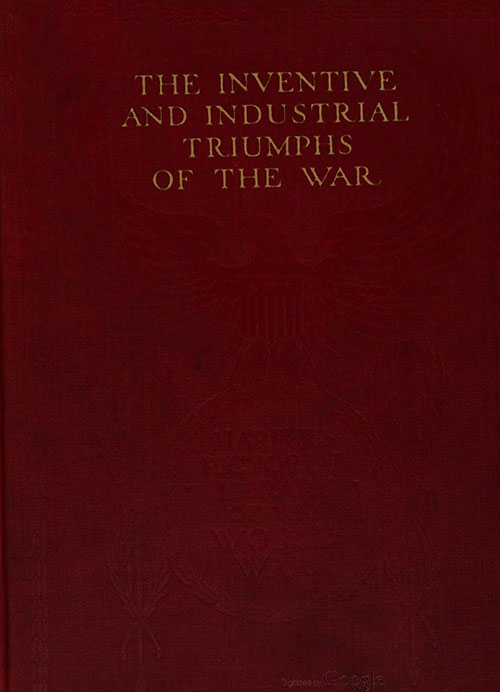
Front Cover, Harper's Pictorial Library of The World War, Volume VIII: The Inventive and Industrial Triumphs of the War, 1920. GGA Image ID # 182f590271
The Inventive and Industrial Triumphs of the War from Harper's Pictorial Library of the World War offers incredible photographs covering advances in warfare, technology, and tactics used by Allied forces and German during World War 1. Volume VIII of this Series was Edited by Austin C . Lescaboura and J. M . Bird and Published by Harper & Brothers Publishers, 1920.
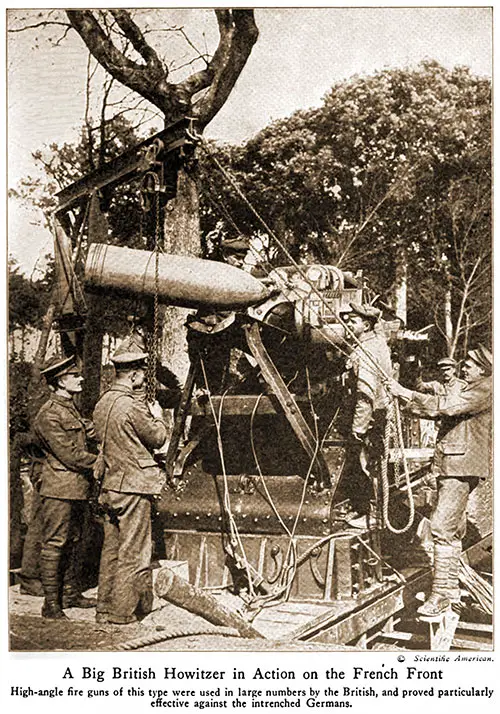
A Big British Howitzer in Action on the French Front. High-Angle Fire Guns of This Type Were Used in Large Numbers by the British, and Proved Particularly Effective Against the Intrenched Germans. Photograph © Scientific American. Harper's Pictorial, Vol. 8, 1920. GGA Image ID # 182f6e5711
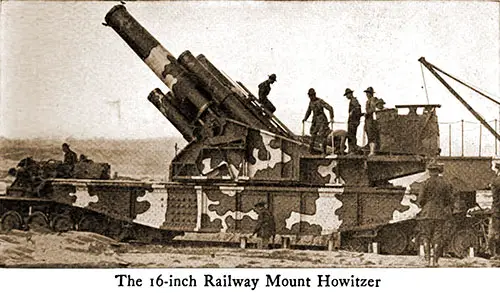
The 16-inch Railway Mount Howitzer. Harper's Pictorial, Vol. 8, 1920. GGA Image ID # 182f8ebab3
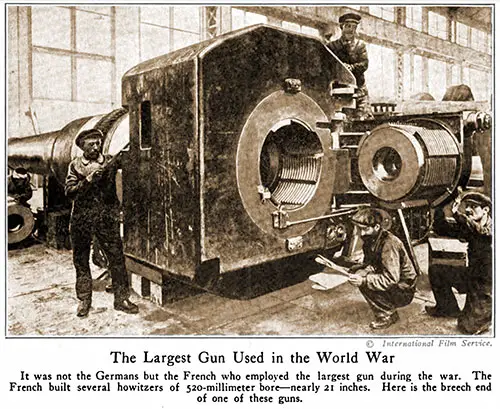
The Largest Gun Used in the World War. It Was Not the Germans but the French Who Employed the Largest Gun During the War. the French Built Several Howitzers of 520-Millimeter Bore - Nearly 21 Inches. Here Is the Breech End of One of These Guns. Photograph © International Film Service. Harper's Pictorial, Vol. 8, 1920. GGA Image ID # 182fbe72a6
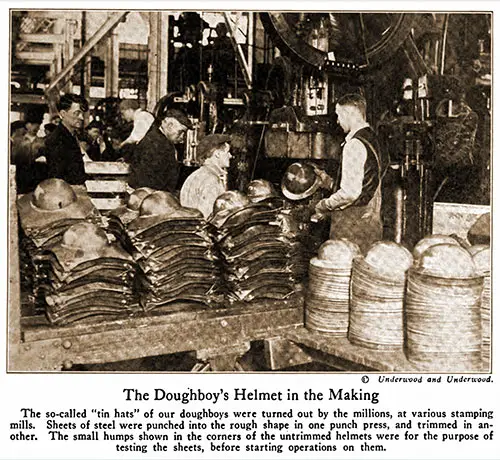
The Doughboy's Helmet in the Making. The So-Called "Tin Hats” of Our Doughboys Were Turned Out by the Millions, at Various Stamping Mills. Sheets of Steel Were Punched Into the Rough Shape in One Punch Press, and Trimmed in Another. The Small Humps Shown in the Corners of the Untrimmed Helmets Were for the Purpose of Testing the Sheets , Before Starting Operations on Them. Photograph © Underwood & Underwood. Harper's Pictorial, Vol. 8, 1920. GGA Image ID # 182fd71d23
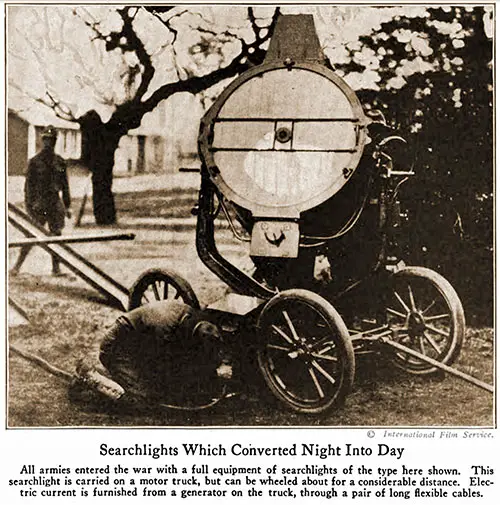
Searchlights Which Converted Night Into Day. All Armies Entered the War With a Full Equipment of Searchlights of the Type Here Shown. This Searchlight Is Carried on a Motor Truck , but Can Be Wheeled About for a Considerable Distance. Electric Current Is Furnished From a Generator on the Truck, Through a Pair of Long Flexible Cables. Photograph © International Film Service. Harper's Pictorial, Vol. 8, 1920. GGA Image ID # 18302f7046
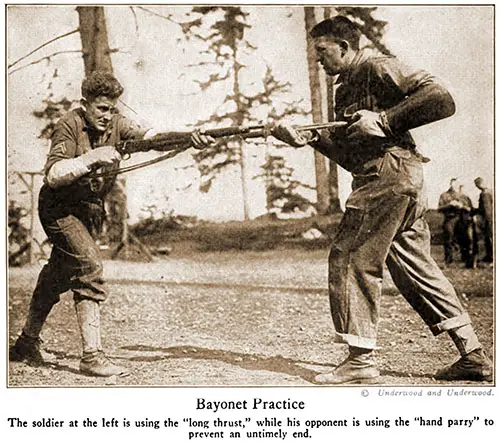
Bayonet Practice. the Soldier at the Left Is Using the “Long Thrust,” While His Opponent Is Using the "Hand Parry” to Prevent an Untimely End. Photograph © Underwood & Underwood. Harper's Pictorial, Vol. 8, 1920. GGA Image ID # 1830396a4c
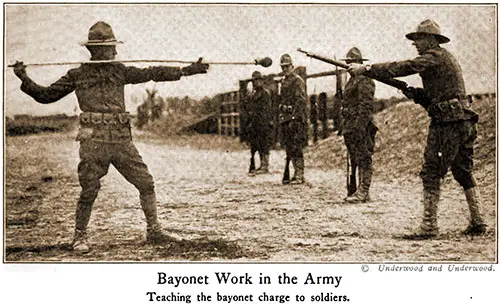
Bayonet Work in the Army. Teaching the Bayonet Charge to Soldiers. Photograph © Underwood & Underwood. Harper's Pictorial, Vol. 8, 1920. GGA Image ID # 18307952a2
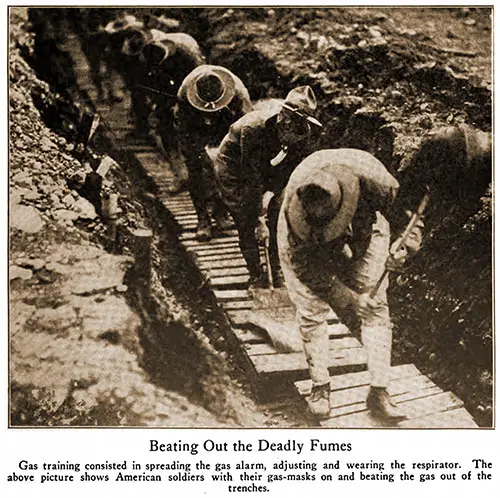
Beating Out the Deadly Fumes. Gas Training Consisted in Spreading the Gas Alarm , Adjusting and Wearing the Respirator. the Above Picture Shows American Soldiers With Their Gas-Masks on and Beating the Gas Out of the Trenches. Harper's Pictorial, Vol. 8, 1920. GGA Image ID # 1830841030
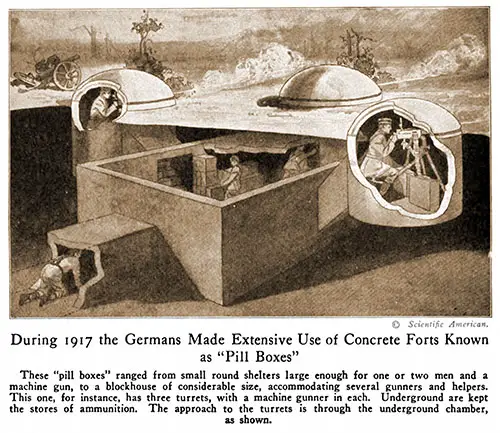
During 1917 the Germans Made Extensive Use of Concrete Forts Known as “Pill Boxes.” These “Pill Boxes” Ranged From Small Round Shelters Large Enough for One or Two Men and a Machine Gun, to a Blockhouse of Considerable Size, Accommodating Several Gunners and Helpers. This One, for Instance, Has Three Turrets, With a Machine Gunner in Each. Underground Are Kept the Stores of Ammunition. the Approach to the Turrets Is Through the Underground Chamber, as Shown. Photograph © Scientific American. Harper's Pictorial, Vol. 8, 1920. GGA Image ID # 183093e5d1
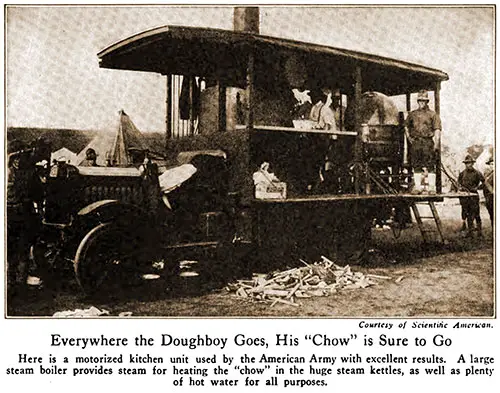
Everywhere the Doughboy Goes, His “Chow” Is Sure to Go. Here Is a Motorized Kitchen Unit Used by the American Army With Excellent Results. a Large Steam Boiler Provides Steam for Heating the “Chow” in the Huge Steam Kettles, as Well as Plenty of Hot Water for All Purposes. Photograph Courtesy of Scientific American. Harper's Pictorial, Vol. 8, 1920. GGA Image ID # 1830c00e4c
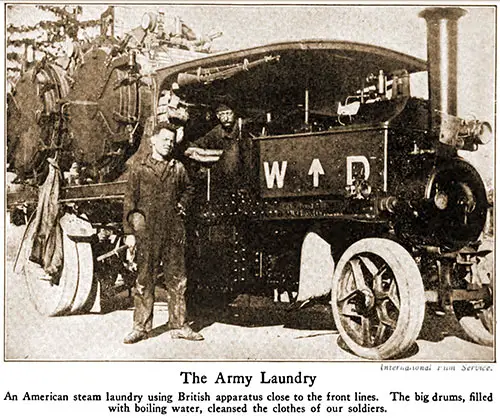
The Army Laundry. An American steam laundry using British apparatus close to the front lines. The big drums, filled
with boiling water, cleansed the clothes of our soldiers. Photograph by International Film Service. Harper's Pictorial, Vol. 8, 1920. GGA Image ID # 183105f2c3
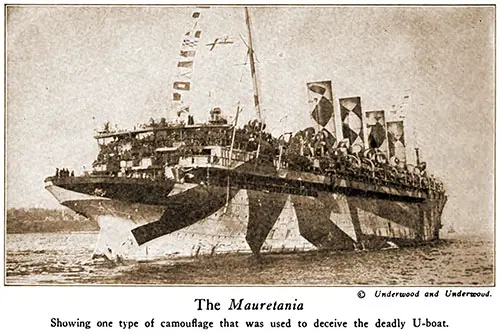
The Cunard Liner/Troop Transport Mauretania Showing One Type of Camouflage That Was Used to Deceive the Deadly U -Boat. Photograph © Underwood & Underwood. Harper's Pictorial, Vol. 8, 1920. GGA Image ID # 18316e8ac3
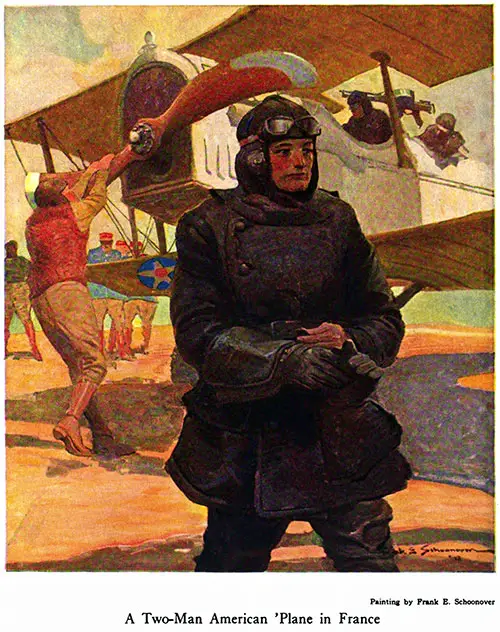
A Two-Man American Plane in France. Painting by Frank E. Schoonover. Harper's Pictorial, Vol. 8, 1920. GGA Image ID # 18318526bc
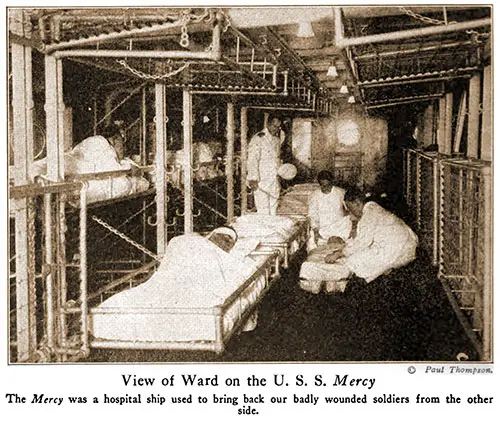
View of Ward on the USS Mercy. The Mercy Was a Hospital Ship Used to Bring Back Our Badly Wounded Soldiers From the Other Side. Photograph © Paul Thompson. Harper's Pictorial, Vol. 8, 1920. GGA Image ID # 1831b88ef6
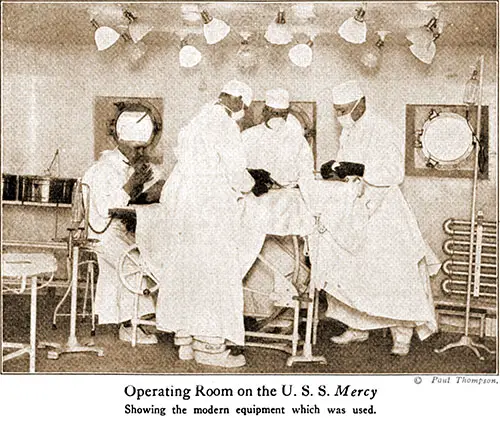
Operating Room on the USS Mercy. Showing the Modern Equipment Which Was Used. Photograph © Paul Thompson. Harper's Pictorial, Vol. 8, 1920. GGA Image ID # 183226c22a
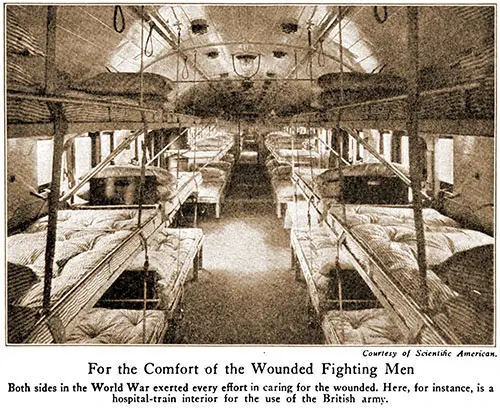
For the Comfort of the Wounded Fighting Men. Both Sides in the World War Exerted Every Effort in Caring for the Wounded. Here, for Instance, Is a Hospital-Train Interior for the Use of the British Army. Photograph Courtesy of Scientific American. Harper's Pictorial, Vol. 8, 1920. GGA Image ID # 183227063a
Austin C. Lescaboura, Ed., and J. M. Bird, Ed., Harper's Pictorial History of the World War in Twelve Volumes, Profusely Illustrated, Volume VIII: The Inventive and Industrial Triumphs of the War--Science and Industry in the Struggle, New York-London: Harper & Brothers Publishers, 1920. Foreword by Charles W. Eliot, Ph.D., and Introduction by Carl Snyder.
